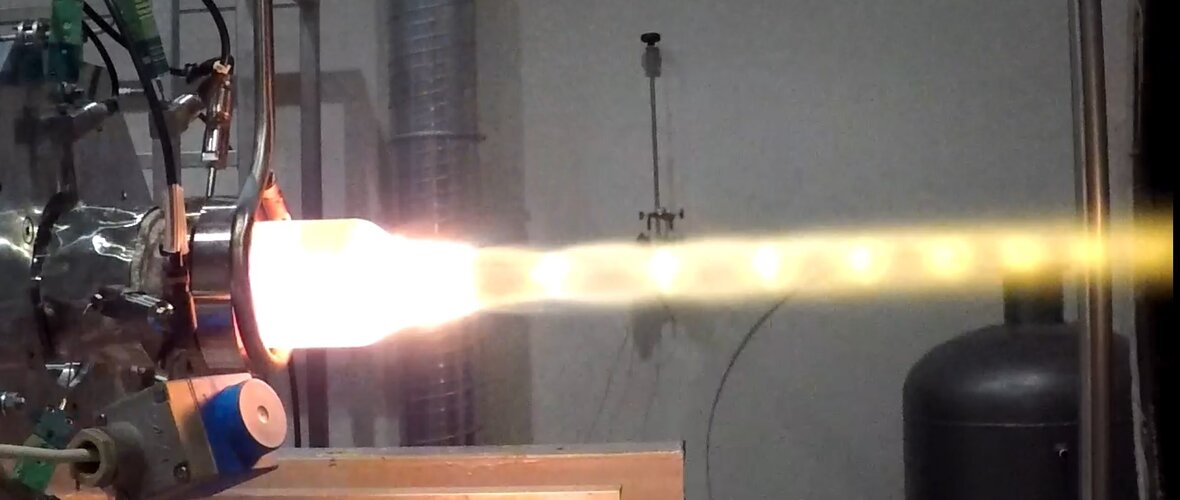A sustained test firing of a ‘green’ satellite thruster at Poland’s Institute of Aviation, intended as a future alternative to today’s hydrazine-based apogee engines, typically used by telecommunication satellites to manoeuvre into their final geostationary orbits.
Today hydrazine is the most common propellant employed by thrusters aboard satellites: it is highly energetic in nature but also toxic and corrosive, as well as dangerous to handle and store.
ESA initiated the Green Liquid Apogee Engine for Future Spacecraft project, GRACE, to evaluate more environmentally friendly thruster options, with testing culminating in a sustained 60-second thruster firing.
GRACE assessed various options, finding the most effective bipropellant combination used ‘high test peroxide’ (HTP) as oxidiser – a much purer version of the same chemical used to bleach hair, which is split into oxygen and water steam using a catalyst – plus TMPDA fuel.
This was a nearly all-Polish project, supported through ESA’s Polish Industry Incentive. Poland’s Institute of Aviation oversaw management, design and testing, with Jakusz providing the HTP, WB Electronics, represented by Flytronic manufacturing most thruster components. Thales Alenia Space in the UK provided requirements and guidelines for design and testing – including the provision of a 500 Newton kerosene-powered thruster, used as a model for the GRACE demonstrator.
“The programme successfully demonstrated a robust catalyst bed capable of sustaining a minute’s continuous firing,” notes ESA propulsion engineer Ferran Valencia Bel.
”GRACE’s success demonstrates Poland’s technical excellence in the area of rocket propulsion, part of a larger ESA effort to put the space industry onto a more sustainable footing, finding non-toxic alternatives to legacy chemicals and materials.”



 Image:
Greener way to get satellites moving
Image:
Greener way to get satellites moving